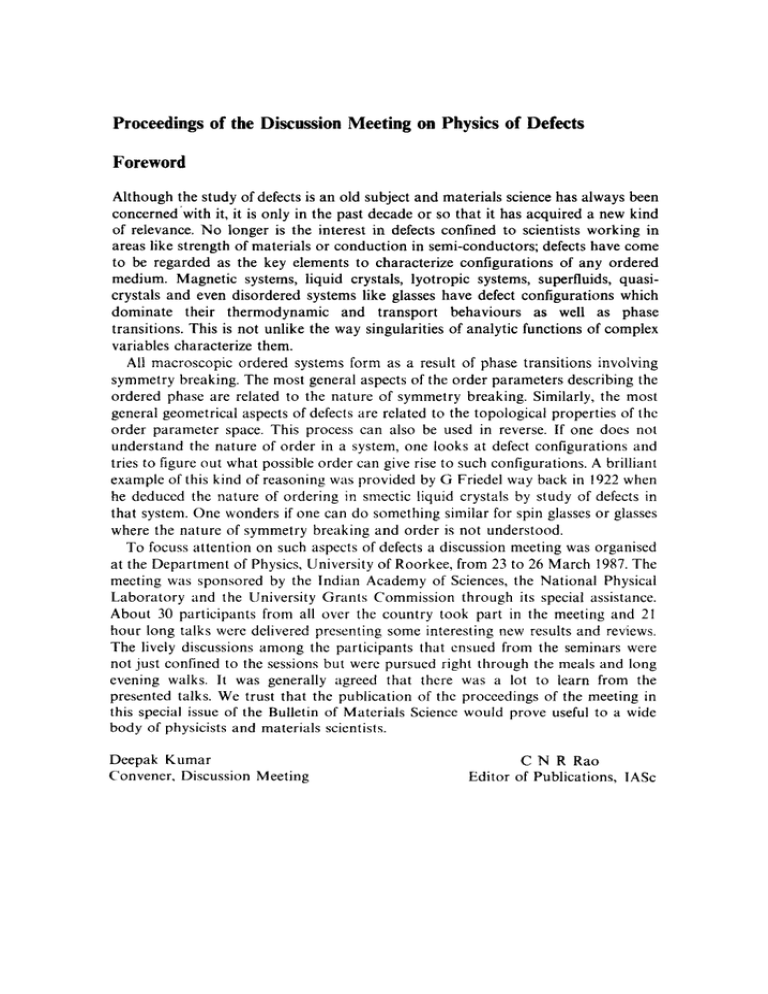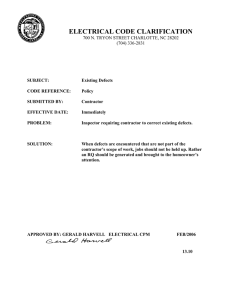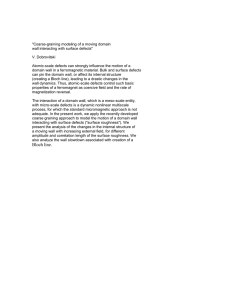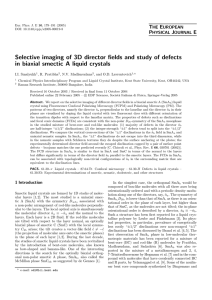Proceedings of the Discussion Meeting on ... Foreword
advertisement

Proceedings of the Discussion Meeting on Physics of Defects Foreword Although the study of defects is an old subject and materials science has always been concerned~with it, it is only in the past decade or so that it has acquired a new kind of relevance. No longer is the interest in defects confined to scientists working in areas like strength of materials or conduction in semi-conductors; defects have come to be regarded as the key elements to characterize configurations of any ordered medium. Magnetic systems, liquid crystals, lyotropic systems, superfluids, quasicrystals and even disordered systems like glasses have defect configurations which dominate their thermodynamic and transport behaviours as well as phase transitions. This is not unlike the way singularities of analytic functions of complex variables characterize them. All macroscopic ordered systems form as a result of phase transitions involving symmetry breaking. The most general aspects of the order parameters describing the ordered phase are related to the nature of symmetry breaking. Similarly, the most general geometrical aspects of defects are related to the topological properties of the order parameter space. This process can also be used in reverse. If one does not understand the nature of order in a system, one looks at defect configurations and tries to figure out what possible order can give rise to such configurations. A brilliant example of this kind of reasoning was provided by G Friedel way back in 1922 when he deduced the nature of ordering in smectic liquid crystals by study of defects in that system. One wonders if one can do something similar for spin glasses or glasses where the nature of symmetry breaking and order is not understood. To focuss attention on such aspects of defects a discussion meeting was organised at the Department of Physics, University of Roorkee, from 23 to 26 March 1987. The meeting was sponsored by the Indian Academy of Sciences, the National Physical Laboratory and the University Grants Commission through its special assistance. About 30 participants from all over the country took part in the meeting and 21 hour long talks were delivered presenting some interesting new results and reviews. The lively discussions among the participants that ensued from the seminars were not just confined to the sessions but were pursued right through the meals and long evening walks. It was generally agreed that there was a lot to learn from the presented talks. We trust that the publication of the proceedings of the meeting in this special issue of the Bulletin of Materials Science would prove useful to a wide body of physicists and materials scientists. Deepak Kumar Convener, Discussion Meeting C N R Rao Editor of Publications, IASc






